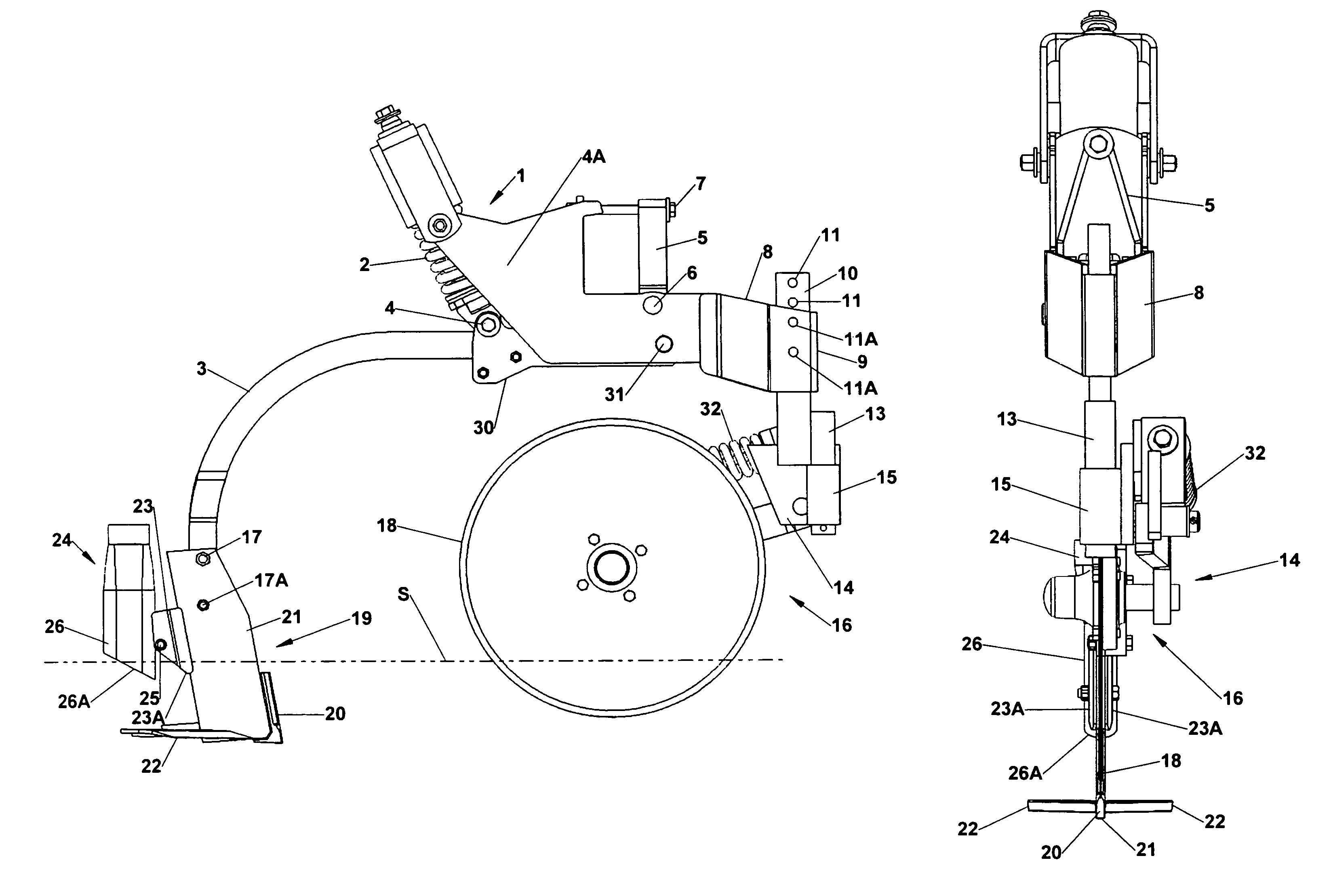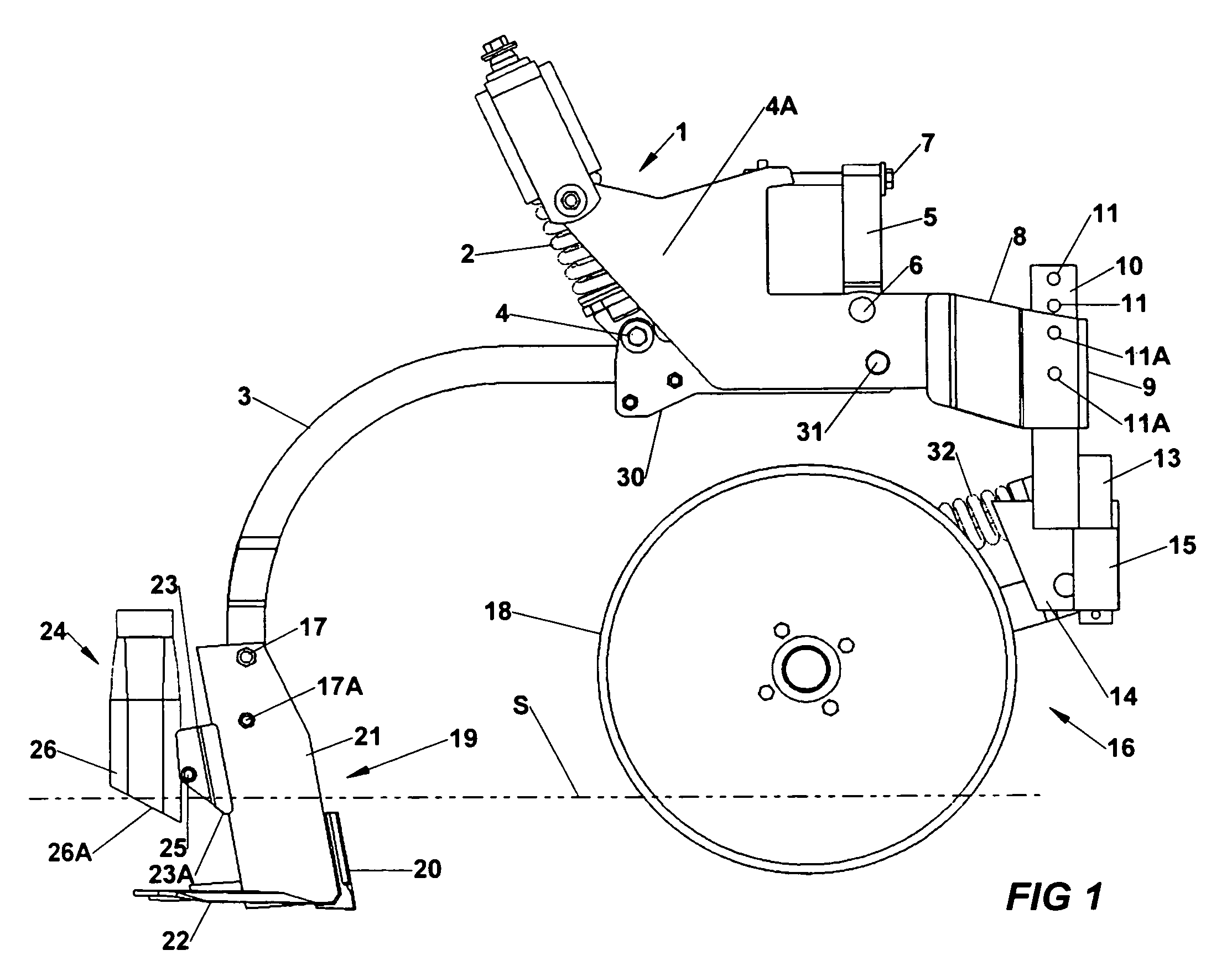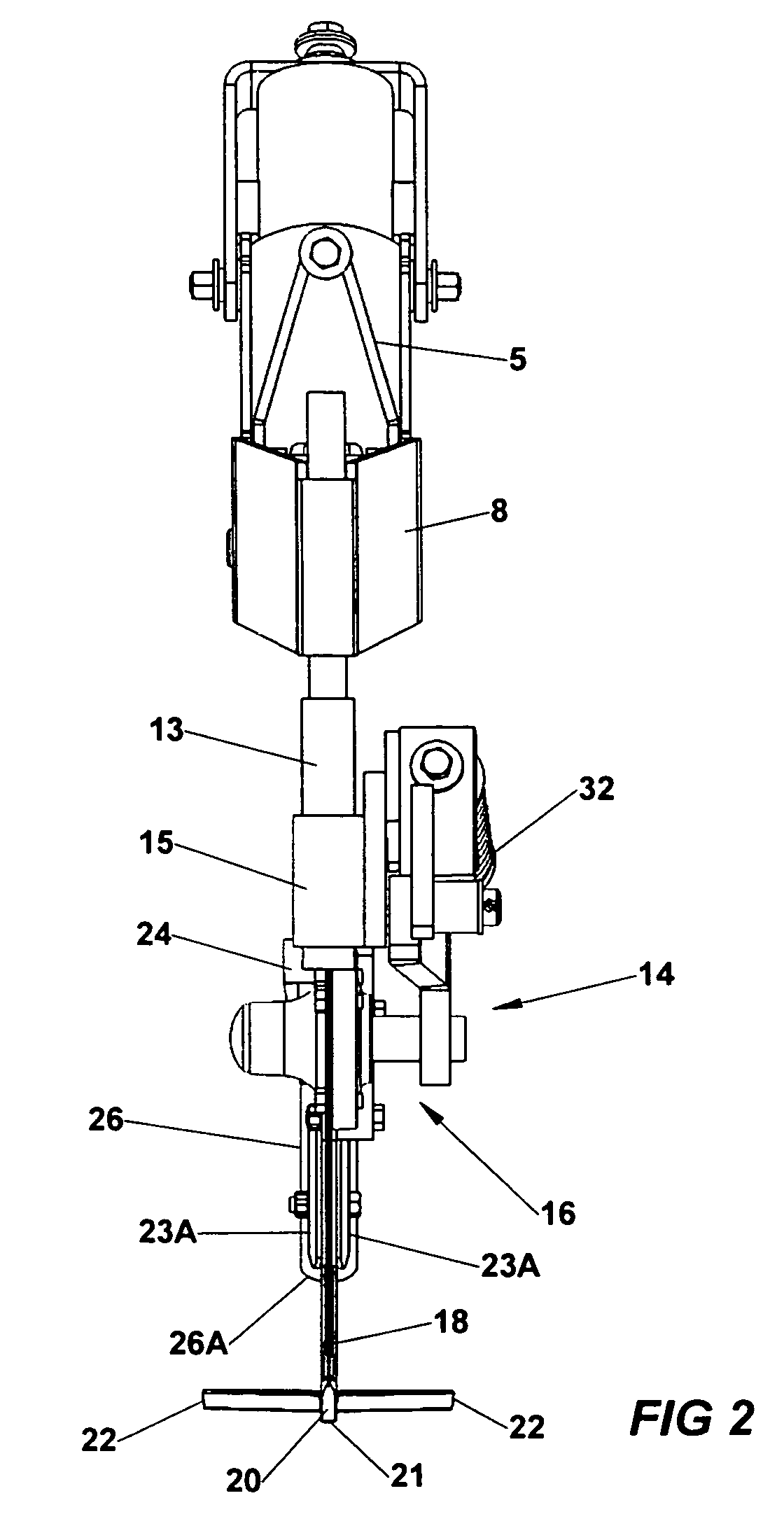Slurry fertilizer applicator
a fertilizer applicator and slurry technology, applied in the direction of direct liquid fertilizer delivery, furrow making/covering, agriculture, etc., can solve the problems of less and less acceptable procedures, strong odor after waste spread, and inability to achieve the effect of reducing the application rate of slurry fertilizer and minimizing soil disturban
- Summary
- Abstract
- Description
- Claims
- Application Information
AI Technical Summary
Benefits of technology
Problems solved by technology
Method used
Image
Examples
Embodiment Construction
[0028]Referring to FIG. 1, a left side view of the overall applicator unit. Reference numeral 1 generally designates a spring reset mechanism for a single row unit of a slurry applicator. As is known, a number of such applicator units are mounted on a wagon or tool bar drawn by a tractor. The applicator units are mounted in side-by-side relation, and spaced apart. The tool bar or frame may have its own support wheels, or be mounted to a wagon carrying the slurry. In any case, it trails a slurry wagon or container for a large amount of slurry fertilizer which is to be applied to a field. A spring 2 is compressed (i.e. preloaded) and pivotally connected to a main mounting shank 3 by a bolt 4. When a rock or other obstruction is encountered by the sweep 19, the main shank 3, applicator sweep 19 and slurry tube 24 are pivoted up and away from the obstruction.
[0029]The spring cushion mechanism is mounted to a conventional toolbar by shank mount 4A and a bracket 5 that pivots on bolt 6. W...
PUM
 Login to View More
Login to View More Abstract
Description
Claims
Application Information
 Login to View More
Login to View More - R&D
- Intellectual Property
- Life Sciences
- Materials
- Tech Scout
- Unparalleled Data Quality
- Higher Quality Content
- 60% Fewer Hallucinations
Browse by: Latest US Patents, China's latest patents, Technical Efficacy Thesaurus, Application Domain, Technology Topic, Popular Technical Reports.
© 2025 PatSnap. All rights reserved.Legal|Privacy policy|Modern Slavery Act Transparency Statement|Sitemap|About US| Contact US: help@patsnap.com



